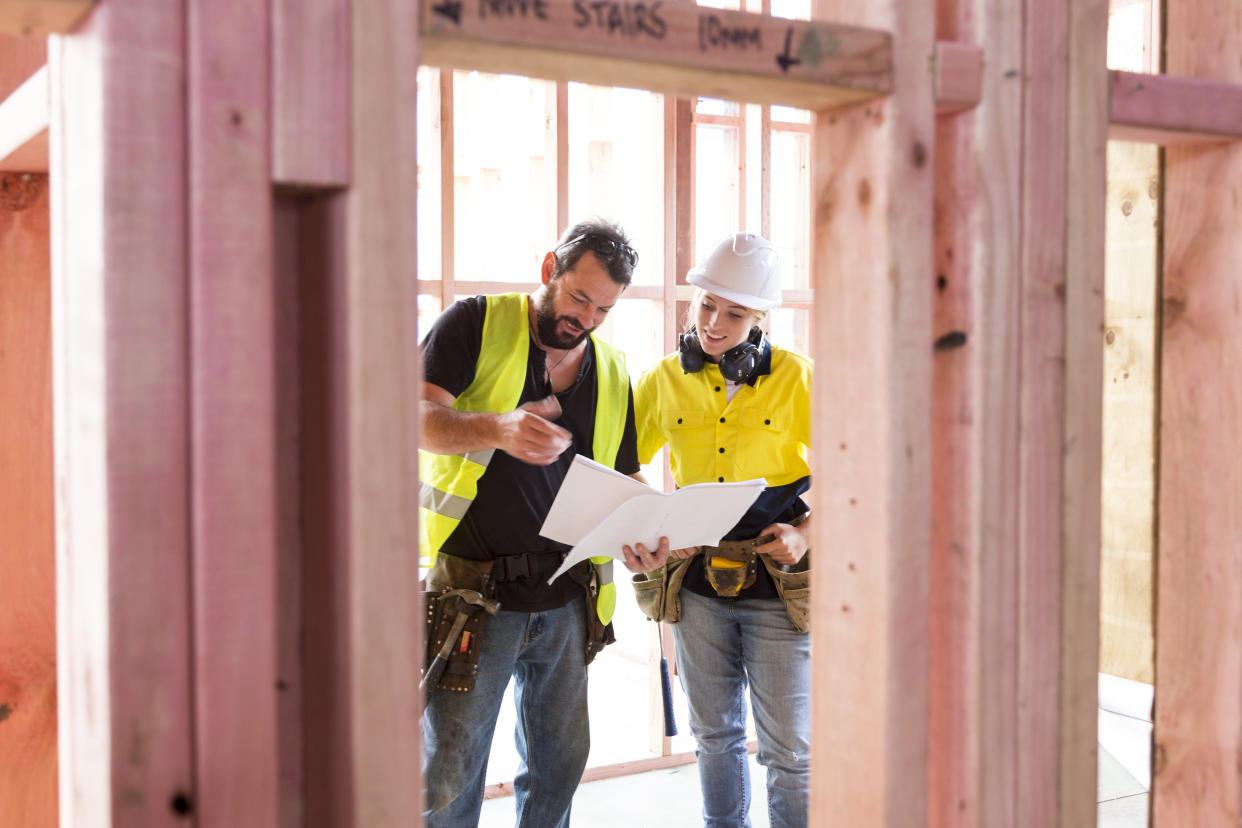What are self-build mortgages and are they good for first-time buyers?
With the new Labour government planning to build 1.5 million houses to reduce pressure in the property market, it’s likely that in the future more of us will look at building our own home. There are many benefits to a self-build, not least that the materials used are VAT-exempt, but one thing that puts many people off — especially first-time buyers — is how to finance it.
Self-build mortgages are designed for those planning to build a house on a plot of land they’re buying or already own. While your affordability, income and the property’s value will be assessed in a similar way to traditional mortgage products, they work slightly differently because the money is released by the lender in stages, as and when certain targets with the build are met.
“Financially, there are varied options, with most lenders considering five to six stages of funds release, which are dependent on build progress and often regular surveyor visits to agree a stage has been completed,” says David Carmichael of Taylor Carmichael.
What kind of deposit do you need?
The deposit amount you need to secure a self-build mortgage varies from lender to lender, but it tends to be larger than the 10% required if you’re buying a home the traditional way.
Cristian Hinzpeter, self-build specialist at SPF Private Clients, says: “Most lenders prefer the client to put down their own funds first and many lenders like to see 35% of the purchase price [of the land] as a deposit but will then lend 100% of the build costs. Others will lend 80% of the purchase price [of the land] and 80% of the build costs.”
Read more: What is seller fatigue and how can it impact you when buying or selling property?
“Typically, the borrower will locate land and, subject the appropriate planning permission, will either need funds to buy all of the land or will certainly need, for example, up to as much as 25% to 40% of the land value by way of an initial deposit commitment. While some brands and brokers will advertise up to 95% of build costs, this will not be available to many self-build borrowers,” adds Carmichael.
This larger deposit requirement shows that, while there are big financial gains to be had, self-builds also tend to be riskier than traditional property purchases.
Can first-time buyers get a self-build mortgage?
In theory, if you have the required deposit, anyone can borrow on a self-build mortgage, but the reality may be different.
“The market for self-build mortgages is quite inclusive, and many lenders offer products tailored to different types of borrowers. However, it’s essential to check each lender’s specific eligibility criteria, as these can vary,” says Phil Lawford of Saffron for Intermediaries.
Self-build mortgages are often done on a case-by-case basis and there are things you can do to improve your chances of being approved if you haven’t built a house before.
Read more: What is shared ownership? A myth-busting guide
“Lenders may prefer applicants with experience in construction or property development. However, if someone doesn’t have that experience, they’ll need to present a solid plan, full planning permission, and work with qualified professionals like architects or project managers,” says Jahed Mirza of Expert Mortgage Brokers.
“The underwriting for self builds is often stricter than traditional mortgages with an expectation that borrowers will have savings to contribute and income to deal with the unexpected,” flags Carmicheal.

Who offers self-build mortgages and how do the rates compare?
As these are a specialist type of mortgage, there is less choice, and the rates may be higher.
“They typically range from 4% to 6% per year, whereas standard mortgage rates are often lower. This is because there are fewer lenders and more risk from their perspective,” says Mirza.
Building societies, such as Bath Building Society and Suffolk Building Society, offer this type of mortgage, as well as specialist lenders.
“There is a slight premium for self-build but one thing to remember is that you only pay interest on the borrowed amount, so your monthly payments increase as you borrow more and once the project has been completed you would switch to a residential mortgage product,” says Hinzpeter.
“There are many self-build mortgage providers, but they all work slightly differently so it is imperative to speak to a specialist broker to ensure the self-builder doesn’t just choose a mortgage based on the rate of interest.
Read more: 10 fantastic family homes close to top state secondary schools
“Some self-build lenders will insist on a quantity surveyor to be involved or will charge higher fees for the ongoing valuations which can add thousands to the overall cost of the project. It is key that the overall structure of the loan is reviewed and not just the headline interest rate.”
Are there restrictions on the type of build?
One of the big advantages of building your own home is designing it the way you want but you should have in mind that lenders may have certain restrictions.
“Lenders may have specific requirements or limitations on the types of construction methods used. If modern methods, such as prefabricated panels or cladding, are planned, it is important to ensure the lender accepts these,” says Mirza.
What happens if something goes wrong?
Inevitably when you’re building a house, things crop up that haven’t been budgeted for.
“Building a home can come with unexpected costs, whether it’s an issue with materials, delays, or additional work that wasn’t part of the original plan,” says Lawford.
To combat this, most lenders will require you to have extra funds in case of an emergency.
“Lenders will require a contingency fund. This has been increasing over the past few years as the cost of materials has risen, but currently sits at around 10% to 20% of the expected build costs,” says Hinzpeter.
Read more: Top tips to invest in a property and the features that sell a home
“This should cover the self-builder should the main contractor go bust or there are unexpected cost overruns, but the nature of the stage release schedule is that the lender will be involved in every step of the build and therefore ensure the project is on budget and time.”
It's important to note that should the builder go out of business or there are larger-than-expected costs involved, the borrower is still responsible for making the mortgage payments and getting the build to the next stage so that the next tranche of money can be released. For the latter, they will either need to find additional funds or renegotiate the mortgage terms with their lender.
This means it’s crucial that you have a good financial plan in place from the start.
What happens when the build is finished?
When the hard work is done and the build has been completed, not only can you finally move in, but you can usually transition over to a standard residential mortgage, often without having to pay an early repayment charge.
Download the Yahoo Finance app, available for Apple and Android.






















